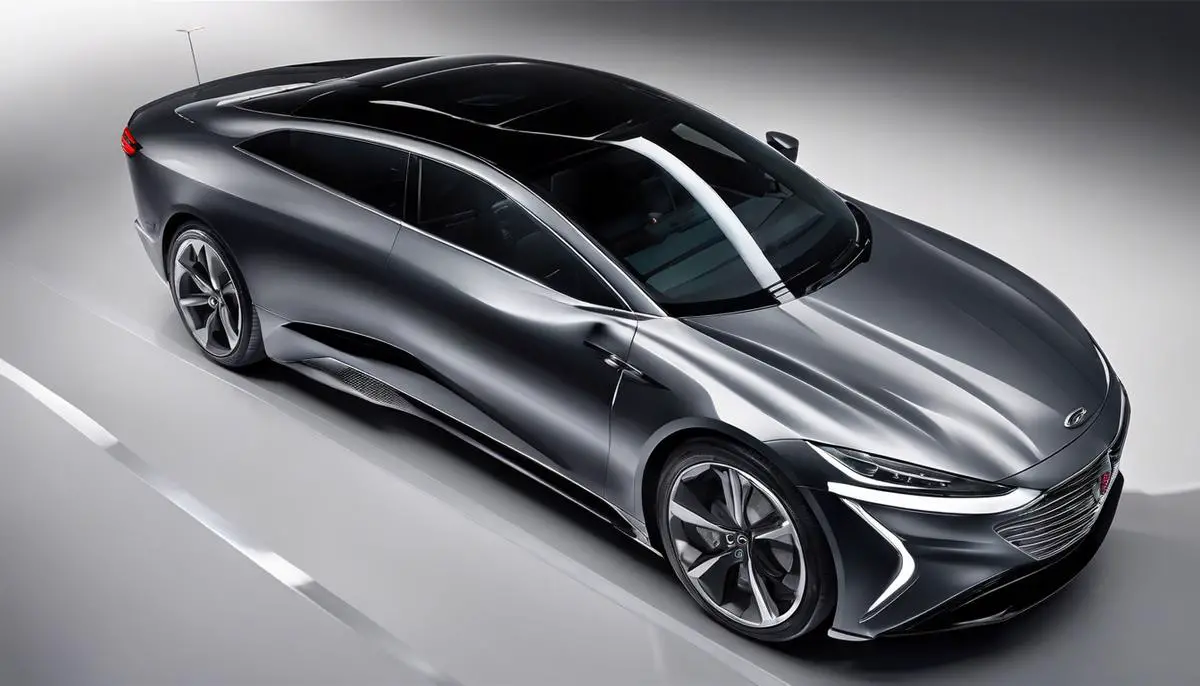Today’s rapidly evolving automotive industry is becoming increasingly focused on leveraging technological advancements to enhance the quality and safety of driving experiences. One significant stride in this trajectory has been the introduction of Adaptive Driving Features. Defined by their ability to adjust to changing situations for enhanced safety and efficiency, these features – which range from Adaptive Cruise Control to Automatic Emergency Braking – are stirring up much discussion. The software and technology driving these functionalities reflect an impressive blend of innovation and prowess, with a broad spectrum of car models offering this new breed of driving experience. While this novel frontier presents promising benefits such as heightened safety, driver convenience, stress reduction, and fuel efficiency, it’s not without its contentious aspects and potential issues rooted in our reliance on technology. This exploration into the world of Adaptive Driving Features aims to shed light on their operational modalities, advantages, and the controversies they unearth, all the while looking ahead at their promise for a future dominated by fully automated vehicles.
Contents
Understanding Adaptive Driving Features
Make Way for Adaptive Driving Features: The Future of Safe and Comfortable Travel
Automotive aficionados, it’s no secret that cars have evolved spectacularly over the years, transforming from bare-bones transportation methods to majestic machines equipped with state-of-the-art technology. One innovation that stands out from the rest is the introduction of Adaptive Driving Features (ADFs). Simultaneously fascinating and intimidating, ADFs embrace advanced technology to enhance safety and convenience for every driver on the road. Intrigued? Let’s delve into the specifics.
Adaptive Driving Features are sophisticated technologies employed in vehicles to aid drivers in navigating, parking, avoiding collisions, and managing speed among other functions. This addresses the growing need for secure and efficient daily commuting, greatly contributing to the overall driving experience.
A quintessential aspect of ADFs is Adaptive Cruise Control (ACC). Recognized for its utility in maintaining a safe distance from vehicles ahead, ACC adjusts the vehicle’s speed based on the traffic condition. Think of it as an advanced version of traditional cruise control. ACC takes over your throttle responsibilities, utilizing radars and sensors to adjust speed and ensure a safe distance from the car ahead.
Lane Keeping Assist (LKA) is another significant ADF you’re likely to encounter. Picture this: you’re on a long road trip, you’re feeling fatigued and inadvertently drift out of your lane. That’s where LKA comes into play. If your vehicle starts to drift from its lane without a turn signal activated, LKA will warn you visually, audibly, or even by gently tugging at the steering wheel.
Then there is Automatic Emergency Braking (AEB). A vigilant co-driver, AEB can initiate braking when it senses an impending collision, especially if the driver does not react promptly. AEB uses forward-looking radar, cameras or lidar (a type of sensor) to detect imminent crashes and act swiftly, potentially averting a disastrous scenario.
Those who dread parking can find solace in Automated Parking Systems. Using ultrasonic sensors, these systems navigate your vehicle into a parking spot with only minimal driver assistance required. Talk about cutting the stress out of parking!
Adaptive Headlights, another noteworthy ADF, are designed to swivel as you steer, illuminating dark corners and adapting to the changing driving conditions. This can immensely enhance night-time driving safety, enabling you to see further along the curve.
The magic behind Adaptive Driving Features is the fusion of sensors, radars, cameras, and complex algorithms. These technologies work in unison to respond to every possible on-road situation. With advancements in Artificial Intelligence, Machine Learning, and the Internet of Things, ADFs are only expected to improve and broaden their capabilities.
Adaptive Driving Features have undeniably paved the way for a safer, smoother, and more accessible driving experience. They offer a glimpse into the future of driving, where cars will not merely be vehicles but intelligent companions that predict, prevent, and respond to conditions even before the driver does. So, the next time you’re testing out a new vehicle, be sure to familiarize yourself with these features. They are no longer a luxury, but a necessity in the world of automotive technology. Embrace the innovation and ride into the future with adaptive driving. Onwards and upwards, folks!

Benefits of Adaptive Driving Features
Continuing from where we left off about Adaptive Driving Features, let’s dive even deeper into the advantages that come with making use of them. One cannot talk about benefits without singling out Enhanced Safety as the premiere advantage. A study by the Insurance Institute for Highway Safety (IIHS) reveals that the risk of car crashes reduced by 27% with forward collision warning systems in place. With these systems minimizing human errors responsible for accidents, it’s crystal clear that ADFs are undoubtedly the future of road safety.
Dovetailing from safety, Traffic Jam Assist instills a new level of convenience into the driving experience, especially in denser city environments. This feature adapts your car’s speed according to the surrounding vehicles, maintaining a safe distance. So, on those groggy mornings stuck in rush hour, ADFs provide the added luxury of simplified navigation.
The next advantage is an intriguing blend of fuel efficiency and reduction of road congestion. The Eco-Drive Support System adjusts your vehicle’s speed for fuel-efficient driving while the Coordinated Adaptive Cruise Control cooperates with other vehicles to control speed, effectively reducing traffic. There’s no denying the significant effects these would have on the environment and the stress levels of our fellow drivers.
For our friends with physical impairments or disabilities, Adaptive Driving Features couldn’t be a more significant boon. With the creation of hand controls for gas and brake, or steering wheel modifications, the boundaries surrounding driving independence are being progressively dismantled. The automobile industry’s commitment to inclusivity is truly revolutionized by ADFs.
How about the discomfort of night driving? The stress of ensuring the correct navigation, while maintaining full visibility, can all be resolved by ADFs that adjust to the driver’s behavior and driving conditions. With features like intelligent high-beam control and lane tracing assist, comfort and safety aren’t compromised under the veil of darkness.
The advantages encapsulated in Adaptive Driving Features go beyond safety and comfort. With ADFs, driving becomes a personalized experience. Take Adaptive Memory Seating for example, which adjusts to your personal sitting preferences every time you get in the car. This personification making every ride a tailor-made experience.
In closing, Adaptive Driving Features not only make driving safer and simpler but also extend inclusivity, personalize experiences, and thread the needle towards environmental consciousness. Positioning themselves as more than just novelties, the ADFs are swiftly becoming big players in the driving industry. As their technologies continue to advance, so too does our anticipation for the driving experience of tomorrow.

Controversies and Concerns Around Adaptive Driving Features
Building forward from the stellar benefits of Adaptive Driving Features (ADF), it is also vital to explore the current concerns and controversies surrounding this area of automotive technology. While ADFs promise considerable advancements for the future of driving, they also instigate a range of discussions on safety issues, privacy concerns, legislative demands and ethical dilemmas.
Safety, an issue always close to the heart of any automotive conversation, sits in the spotlight. Current discussions and debates center around the functionality of ADFs and their full-proof reliability. For instance, while the Adaptive Cruise Control and Automated Parking Systems offer assistance, their dependence on sensors, radars and cameras raises the question of how they would perform under unfavourable weather conditions, sensor misalignment or even sensor breakdown.
Cybersecurity is another critical concern. Given these systems’ heavily reliant on the Internet of Things, concerns about hacking and data breach pop up frequently in discussions. As we enjoy personalized experiences – road and traffic conditions, vehicle speed, braking history – our vulnerabilities to unwanted cyber activities increase. It is vital for manufacturers to continually beef up their cybersecurity measures to protect not just the vehicle but, more importantly, the safety of its occupants.
In line with these cybersecurity concerns are issues related to privacy. Personal data collection is undoubtedly beneficial for enhancing the driving experience. However, questions arise as to what extent this information is used, with whom it is shared, and how it is stored. A balance must be struck between user convenience and privacy protection.
Regulation requirements are another point of discussion. Meeting the legislative standards for all concerned regions can be challenging for manufacturers as ADFs become more global. This could potentially stifle innovation, due to the need to comply with various standards and regulations.
Lastly, the ethical questions surrounding ADFs cannot be overlooked. For instance, in the event of an unavoidable collision, how will an AI decide which lives to prioritize? Can it make a sound judgement akin to a human’s instinct and moral choices in the case of life-threatening situations?
Addressing these concerns and controversies will require open dialogues among manufacturers, regulators, and users. It’s a challenging road ahead, but the journey towards fully embracing ADFs is packed with incredible potential. One step at a time, we’re moving closer to a future where our driving experience is safer, more efficient and deeply personalized. So, buckle up folks! Exciting times lie ahead in this world of Adaptive Driving Features!

The Future of Adaptive Driving Features
Shifting Gears: New Directions in Adaptive Driving Features
When discussing adaptive driving features (ADFs), there is a tendency to focus on the advanced tech systems currently implemented. From sophisticated sensor interfaces to developments in artificial intelligence, the landscape of vehicle technology has clearly entered an innovative era. While these elements underpin the core functionality of ADFs, exploring the future of these technologies requires a holistic viewpoint that envisions new configurations, novel uses, and even unknown challenges.
Imagine a world where vehicles are capable of deciphering complex driving situations, adapting to the environment, and executing commands without human intervention. This isn’t a gratuity of modern science fiction, but the potential next chapter in the chronicle of ADFs. Invigorating strides in technologies like V2X (Vehicle to Everything) communication and edge computing promise a leap in the functionality and decision-making facets of ADFs.
V2X communication expands the realm of adaptive technologies to a broader ecosystem that includes other vehicles, the transportation infrastructure, and even pedestrians. Employing this technology allows vehicles to communicate with one another and their surroundings, contributing to safer, smoother, and more efficient roads. With edge computing facilitating faster data processing and real-time responses, encountering unresponsive pedestrians or erratic weather conditions could become far less hazardous.
Implemented thoughtfully, the development of cooperative adaptive cruise control (C-ACC) can significantly ameliorate traffic congestion issues. Unlike the conventional ACC, C-ACC taps into the power of vehicle-to-vehicle communication for coordinated speed adjustments, ensuring a harmonious, spaced traffic flow.
The era of autonomous vehicles may also unlock limitless potential for visually impaired and individuals with disabilities. Barring regulatory and safety hurdles, these vehicles can offer a new lease on freedom and independence for many.
In line with the global push for sustainability, the proliferation of ADFs in electric vehicles (EVs) would be a substantial milestone. Increased road safety, advanced energy management systems, and optimized driving that accentuates the benefits of electric vehicles can lead to a more environmentally friendly automotive industry.
However, as adaptive driving features advance towards complete autonomy, certain issues cannot be ignored. The operational reliability of ADFs in unique scenarios, ensuring comprehensive cyber security measures against hacking attempts, keeping personal data secure and private, and meeting regional regulatory requirements continue to be pivotal areas for advancement.
Also, contemplating ethical dilemmas associated with AI decision-making in life-threatening situations, demands a profound dialogue among manufacturers, regulators, and users in sculpting the future of ADFs.
As it unfolds, the future of ADFs reveals itself as both fascinating and formidable. It holds the promise of safer and smoother roads, enhanced driving comfort, increased mobility for the disabled, and an all-round greener planet. Yet, it’s imperative to navigate this promising path carefully, addressing technical, ethical, and regulatory challenges along the way. Thus, the vision for tomorrow’s ADFs is not just a high-tech spectacle; it’s a world of driving that hopes to be more inclusive, sustainable, and fundamentally, more human.

In the ever-evolving narrative of automotive development, Adaptive Driving Features are undoubtedly a pivotal chapter. They have emerged as the bridge leading us towards the impending era of autonomous vehicles, their evolution promising a radical overhaul of how we understand and engage with the act of driving. While these features are fraught with controversies and fears due to unwavering dependence on technology and potential encouragement of distracted driving, their upsides can’t be shrugged off. The invaluable benefits they offer – from enhanced safety to fuel efficiency to convenience – are potent arguments for their growing adaptation. While the road ahead may be fraught with challenges and require careful navigation, there’s a glimmer of an exciting future where Adaptive Driving Features could play a transformative role in revolutionizing the dynamics of road safety and user experience.



